The dream of being the "perfect race" was not only about the Germans. The Russians also wanted to be invincible. The illustration shows a fragment of a Soviet propaganda poster.
The concept of eugenics was coined in 1869 by the British scientist Francis Galton. He understood by this word actions to improve species (including humans) through selective reproduction. The eugenics movement quickly gained popularity in Western Europe and the USA, but it did not come across favorable conditions in Russia.
In an agrarian, sparsely populated state that did not experience problems such as overpopulation or declining fertility, there was no cause for concern about biological degeneration and social degradation. Due to the multi-ethnicity of both the lower classes and the ruling elite, there was also a lack of interest in the issue of race mixing.
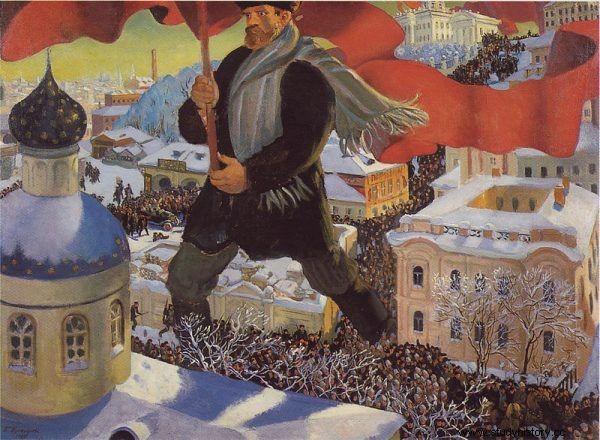
The October Revolution and the seizure of power by the Bolsheviks gave rise to interest in eugenics in Russia. Illustration by Boris Kustodiev.
Around 1900, eugenics began to gain interest in Russia and the first popularizers. However, it has not been institutionalized in any way. It flourished only after the October Revolution and the seizure of power by the Bolsheviks.
Create a Soviet Übermensch
In Soviet Russia, the seed of the eugenic idea fell on fertile ground. After all, the Bolsheviks wanted to create a new and better man. This idea was expressed directly by the communist revolutionary Lev Trotsky, quoted by Simon Ings in the latest book "Stalin and scientists":
The human will eventually really begin to harmonize himself. He will set himself the task of imparting the movements of his own organs - while working, walking, playing - with the highest precision, purposefulness, economy, and thus beauty. He will want to control partially conscious and then unconscious processes in his body - breathing, blood circulation, digestion, and reproductive functions - and bring them under the control of reason and will.
Life, even purely physiological life, will become a collective experiment. Humanity, the fossilized species of Homo sapiens, will again undergo radical reconstruction and will become - through its own hands - the subject of sophisticated methods of artificial selection and psychophysical training (...). Man will set a goal for himself (...) to rise to a new level - to create a higher sociobiological type or - if you prefer - a superman [Übermensch].

The latest book by Simon Ings "Stalin and Scientists" (Agora 2017) is a fascinating story about people from the world of science who turned into madmen at Stalin's services and became the laughingstock of the world.
Eugenics was also a tool used in building a totalitarian state. It served to the increasing medicalization of social life, and thus its modernization. It also allowed the state to increase its control over citizens and their bodies . Hygienists and doctors have used eugenics to pose as specialists and advisers who can shape government policy in areas such as pedagogy, demography, and family and marriage law.
In 1916, a Moscow geneticist and one of the main promoters of eugenics in Russia, Nikolai Koltsov, founded the Institute of Experimental Biology. After the October Revolution, he quickly won the favor and patronage of the People's Commissar for Health, Nikolai Siemaszko. In January 1919, his ministry established the State Museum of Social Hygiene - the first eugenics institution in the USSR.
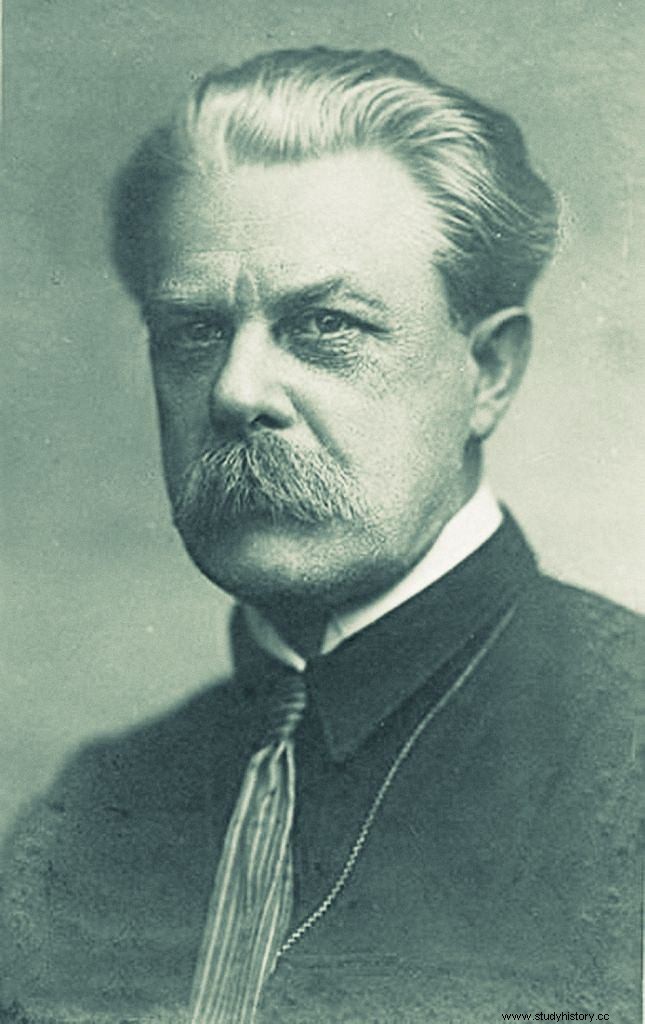
Nikolai Koltsov (pictured) was a professor of biology and an enemy of Trofim Lysenko, Stalin's scientific pet. It was Lysenko who had just obtained the rank of the highest authority in the field of biology in the USSR, which he maintained until his death despite his "pseudo" rather than scientific theories.
Less than a year later, in November 1920, Koltsov established the Russian Eugenics Society, and in 1922 he began publishing the Russian Eugenics Journal. In St. Petersburg, in turn, the geneticist Yuri Filipchenko led to the establishment of a department and a genetic laboratory at Petrograd University in the early 1920s and the Eugenics Bureau operating within the Russian Academy of Sciences and publishing its own journal.
For Siemaszko, all of this was part of something much bigger:an extensive social hygiene program. Its aim was to improve the health of the USSR population through far-reaching prophylaxis.
Eugenics at its peak
The Russian and Soviet specificity was the skepticism of eugenics supporters towards the use of negative methods, such as sterilization or racial or class segregation. In their activities, they wanted to use such measures as: providing intelligence with better living conditions and selective reproduction in order to disseminate the desired traits .

Compulsory sterilization was a social program that emerged in the early 20th century as part of so-called negative eugenics. This was to prevent the reproduction of people with undesirable traits. Pictured is a poster from the 1921 US conference showing states that introduced compulsory sterilization.
Soviet geneticists and eugenicists (at that time they were mostly the same people) conducted studies on the inheritance of diseases and certain physical traits, as well as various talents and creative abilities. Much attention has been paid to blood group testing.
This has been very often led astray. For example, biochemist Oleg Manoylov announced his alleged success in developing a simple chemical test to identify a person's race and ethnicity from the color of blood , treated with a special reagent. Needless to say, this turned out to be complete nonsense.
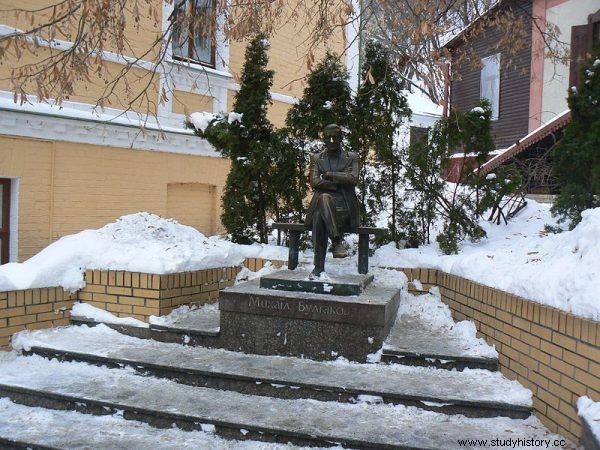
"Dog's heart" by Mikhail Bulgakov (in the picture of the writer's monument located in Kiev) was first published in 1987. The protagonist of the story is a professor who transplantes a human pituitary gland to his dog.
Eugenics has also penetrated popular culture. Related topics were theatrical plays and novels, including the satirical "Dog Heart" by Mikhail Bulgakov, which was officially released only in 1987. In turn, the magazine "Hygiene and Health of the Workers 'and Peasants' Family" announced in the mid-1920s a national competition for the healthiest child of the year. From among 753 entries, 25 newborns were selected whose families received awards, including:sewing machines and toy sets.
Certain legal regulations, however, turned out to be the most important result of the activity of eugenicists. The Civil Code, adopted in 1926, prohibited marriages between people under the age of 18, closely related relatives, and people suffering from mental illnesses. Before the wedding, the couples were required to present each other's medical history .
Darwin vs. Stalin
With the consolidation of power in the USSR by Joseph Stalin, the situation of eugenics began to deteriorate. The discrepancies between the views of geneticists and the results of their research and the ideology in force in the state grew larger and larger.

The Moscow Kremlin, into which Stalin entered in 1918. When the Red Tsar took power in Russia, the situation for eugenics deteriorated significantly.
As early as the mid-1920s, attacks on eugenics began as "bourgeois science," contrary to Bolshevik egalitarianism. There was some truth in that. The scientists' elitism was expressed in their special concern for intelligence, which was to be the carrier of genes associated with creative talents. The already mentioned Nikolai Koltsov opposed, for example, contraception. For he believed that it would be used mainly by representatives of the aforementioned class, and that less valuable peasants and workers would reproduce further into power.
Marxism emphasized the influence of the environment and education as the most important factors in shaping the human individual. Meanwhile, the geneticist Solomon Lewit wrote:"We cross out the simplified beliefs about the omnipotent role of the environment, against which living organisms would be a kind of amorphous mass that could change and move in any direction." No wonder that, according to Soviet ideologists, scientists in Russia have so far attached too much importance to biological factors and heredity.
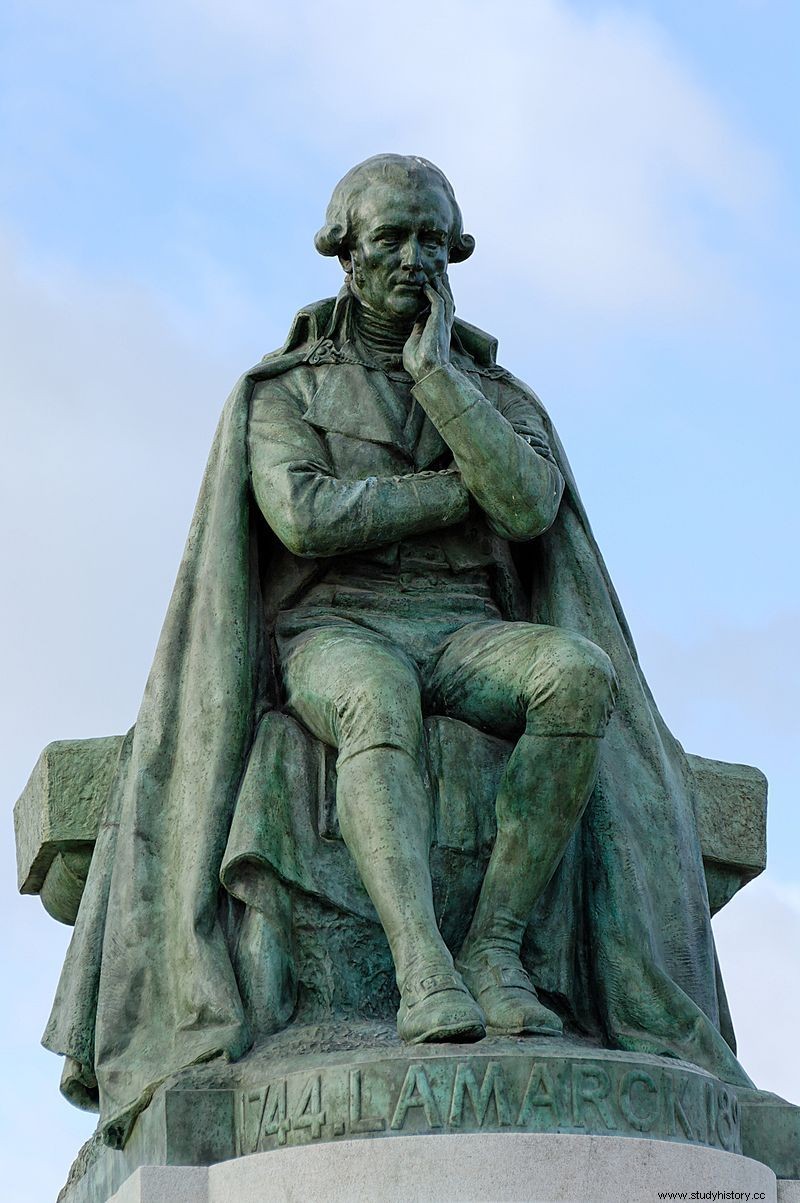
Lamarckism was the first materialistic theory of evolution to question the constancy of species characteristics. The photo shows the statue of Jean Baptiste de Lamarck by Leon Fagel.
Marxist belief in the decisive role of the environment in human development influenced the popularity of the theory of the inheritance of acquired characteristics, formulated by Jean-Baptiste Lamarck. As Simon Ings writes in his book "Stalin and scientists":
Stalin was also a self-proclaimed lamarkist obsessed with the idea that it was possible to change the nature of plants. Over the years, this obsession grew more and more, and in fact became his only hobby. (...) Of course, heads of state, politicians and officials may also have hobbies. Problems only begin when such people claim expertise that they don't really have (...). The tragedy of the Bolsheviks was that they felt they were fully entitled to put on the robes of scientists.
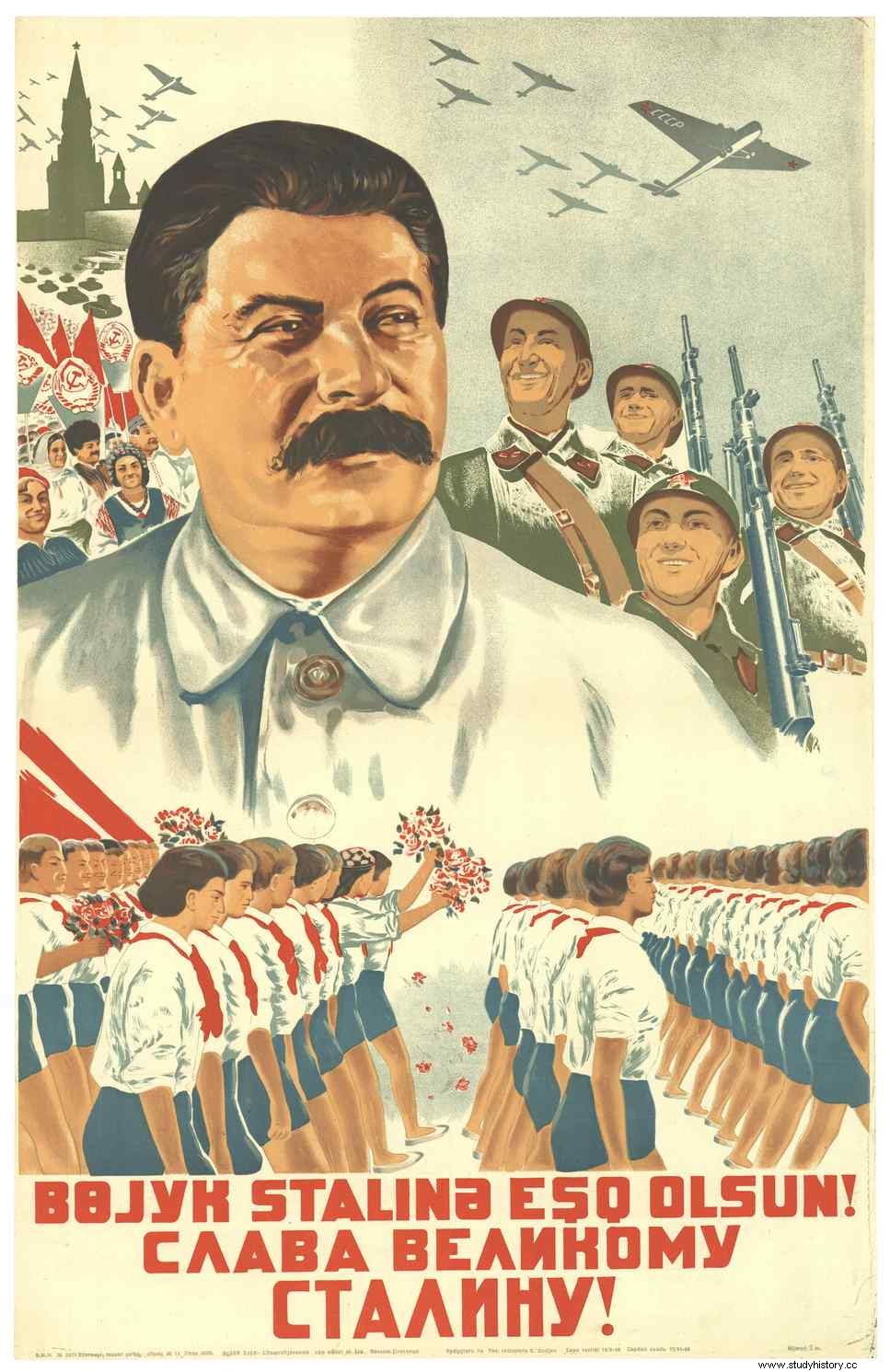
Stalin officially condemned eugenics, but he also dreamed of making the Russians an ideal race. The pseudo-scientists he employed worked on such ideas as attempts to crossbreed a human with a chimpanzee or the tape fertilization of women ... Illustrated is a fragment of a propaganda poster from 1938.
In 1931, Stalin expressed his conviction that it was necessary to "organize studies and expose (...) the mechanistic school" of Nikolai Koltsov. The Russian Eugenics Society and its journal were closed a year earlier. Eugenics ceased to be officially practiced science in the USSR.
"Racist biology"
Despite fierce ideological attacks, eugenics saved their skins and were allowed to pursue "medical genetics" for the time being. In the mid 1930s they even received the support of the People's Health Commissariat and seemed to have a pretty bright future ahead of them.
A new wave of attacks on scientists in this field of science came in the second half of the 1930s. It was a consequence of the seizure of power in Germany by Hitler, the growing tension in relations between the two totalitarian powers and the Stalinist great terror. While Soviet geneticists openly condemned the Nazi policy of racial hygiene, this did not save them from being accused of engaging in "bourgeois eugenics" and adhering to "fascist views."
In 1936, Solomon Lewit, the most important promoter of "medical genetics", was expelled from the Bolshevik party, and a year later the research institute he had established was closed. In the spring of 1938, Lewit was arrested, declared an enemy of the people, and executed. A similar fate befell the geneticist Nikolai Wawilov. Nikolai Koltsov died of a heart attack in 1940.
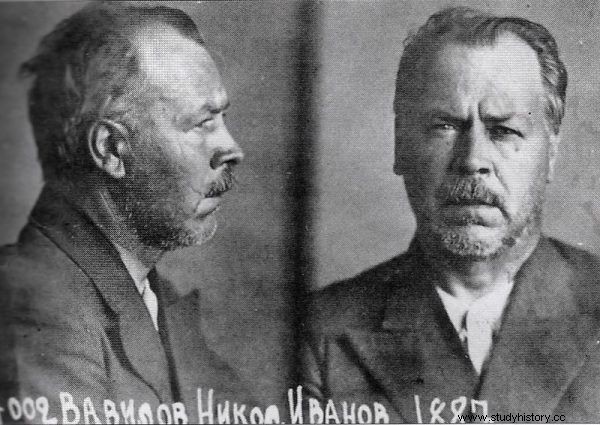
Nikolai Wawilov after he was arrested by the NKVD in 1940. The biologist and geneticist, although famous for his research, ended up like other Russian scientists. With the rule of the "red tsar", madmen and charlatans have moved to the pedestal of the world of science.
The most important biologist in the USSR became Trofim Lysenko, the infamous creator of the absurd theory that living organisms could be transformed unlimitedly by changing environmental conditions . Genetic research in the Soviet Union was inhibited for several decades.
Bibliography:
- Krementsov Nikolai, Eugenics in Russia and the Soviet Union , [in:] The Oxford Handbook of the History of Eugenics , ed. Alison Bashford &Philippa Levine, Oxford University Press, Oxford 2010.
- Krementsov Nikolai, From 'Beastly Philosophy' to Medical Genetics:Eugenics in Russia and the Soviet Union, Annals of Science 2011 No. 1, pp. 61-92.
- Ings Simon, Stalin and the scientists , Agora, Warsaw 2017.
- Anders Rudling, Eugenics and Racial Biology in Sweden and the USSR:Contacts across the Baltic Sea , "Canadian Bulletin of Medical History", Vol. 31 (2014), No. 1, pp. 41-75.
